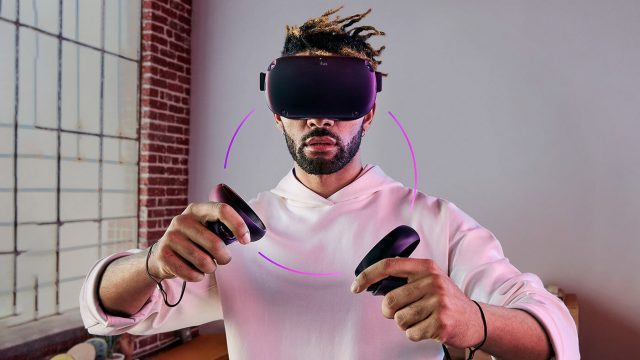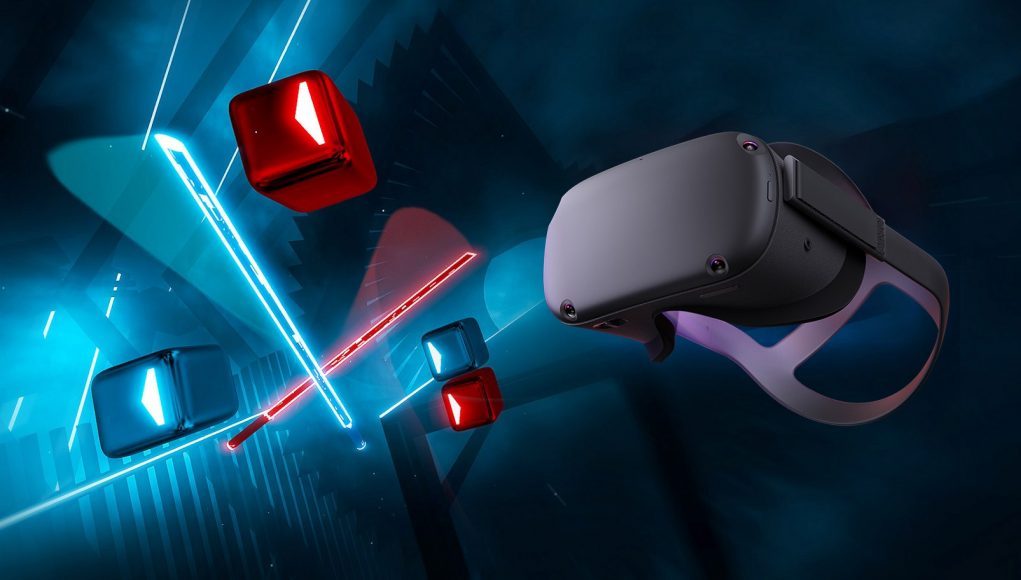Beyond being a great VR game, Beat Saber has inadvertently turned out to be an excellent benchmark of controller tracking performance, and thus a great test for the upcoming Oculus Quest standalone headset, the first from the company to feature inside-out tracking. Having played Beat Saber’s highest difficulty (Expert+) on Quest, I’m now confident that it’s up to the task.
With Quest launching in this Spring, and one of the most successful VR titles to date—Beat Saber—confirmed as a launch title, the measure of any other standalone VR headset in the near future is very likely to become ‘Can it play Beat Saber‘?
It’s a tall order for any VR system, considering the high level of tracking performance necessary to make Beat Saber not just feel good, but be truly playable all the way up to its most challenging Expert+ difficulty. PSVR’s tracking just barely makes the cut, but seasoned Beat Saber players will immediately notice the added latency (and considerably smaller tracking volume) compared to the gold standards of VR tracking on the Rift and Vive.
Even then, Beat Saber players were pushing the Vive controller tracking to limits which Valve had not initially considered humanly possible, prompting the company to update its tracking code to account for the speed of high-level players.
So it would be no small feat for Oculus Quest, which uses an inside-out tracking system, to be able to handle Beat Saber at Expert+ difficulty. But when I tried the game on Quest at last month’s GDC, I found that it is definitely up to the task.
The first thing I noticed when putting on the headset and firing up ‘POP/STARS’—the most challenging Expert+ track of the four-track selection presented in the GDC demo—is that the latency and accuracy feels much tighter than on PSVR, and much closer to what I’d expect from the Rift or Vive. For reference, this video shows the note sequence of the song on Expert+ and the corresponding movements that the tracking had to keep up with:
Lower latency and higher accuracy means a better alignment (in space and time) between your real hand and your virtual hand. With too much latency, the swords in Beat Saber will feel ‘floaty’, which can be especially challenging when dealing with strings of opposite notes (ie: lots of up/down arrows in a row). Without enough accuracy you’re prone to miss more often.
With latency and accuracy feeling very good, another big question for Beat Saber on Quest is tracking coverage. Coverage is a challenge for inside-out tracking because such systems typically rely on line-of-sight between cameras on the headset and controllers in your hands, which can sometimes be blocked. While Quest’s four cameras do indeed have some blind spots (notably behind the forward position of the headset), the front-facing nature of Beat Saber never comes into conflict with them. And in those occasions where an arm might briefly occlude the other controller the system seems to handle it without flaw.

Consistency—how often the tracking works without any gross errors—is of course essential for high-level Beat Saber play, because you never want to feel like the headset is causing you to make errors. Having completing ‘POP/STARS’ with on Expert+ with a ~90% combo, I played four more times (on different tracks). Across those five players there was only one instance where I missed a note and felt like it was the system’s fault and not my own. Estimating roughly 650 notes per Expert+ song, that’s an error rate of ~0.03%, which is below the 99.9% consistency threshold that I would say any form of input needs to not frustrate the user.
So Quest’s tracking, for Beat Saber specifically, feels pretty darn good—much better than PSVR, and nearly as good as I’d expect when playing Expert+ songs on Rift or Vive. Of course, certain environmental factors (things like bright lights, mirrors, etc) can cause challenges for inside-out tracking. Until we have Quest in our hands to try anywhere and everywhere, we won’t know how robust it is to varied environments, but in the right setting it achieves a surprisingly high bar for tracking performance.
Graphically speaking, Beat Saber on Quest has been visibly turned down a few notches—everything is a little blockier and less shiny—but it’s otherwise the exact same core gameplay, interface, etc.
The ability to handle Beat Saber at Expert+ difficulty is good news for Quest, which seems to be leading the pack in inside-out tracking performance among any standalone headset we’ve seen so far.
Update (April 3rd, 2019): Adjusted a sentence about ‘Quest launching in just a few months’ to be less ambiguous. The most specific information Oculus has provided about the Quest release date is “Spring 2019.”







